
How to Use Grove - RS485 : Examples, Pinouts, and Specs
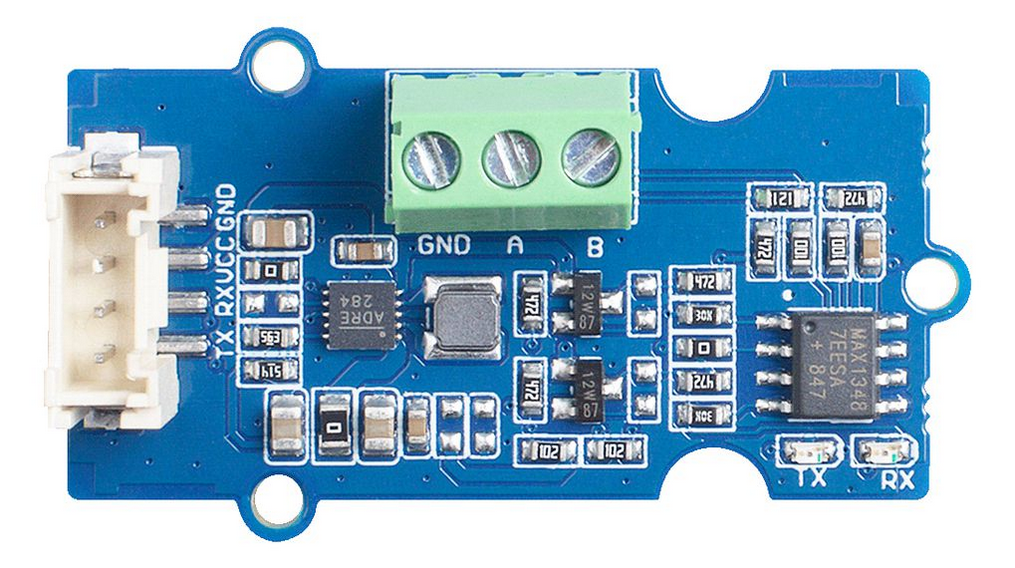
 Design with Grove - RS485 in Cirkit Designer
Design with Grove - RS485 in Cirkit DesignerIntroduction
The Grove - RS485 (Manufacturer Part ID: 103020193) is a communication module designed by Seeed Studio. It enables long-distance, robust, and noise-resistant serial communication using the RS485 protocol. RS485 is widely used in industrial and commercial applications due to its ability to support multiple devices on the same bus and its resilience in noisy environments.
Explore Projects Built with Grove - RS485
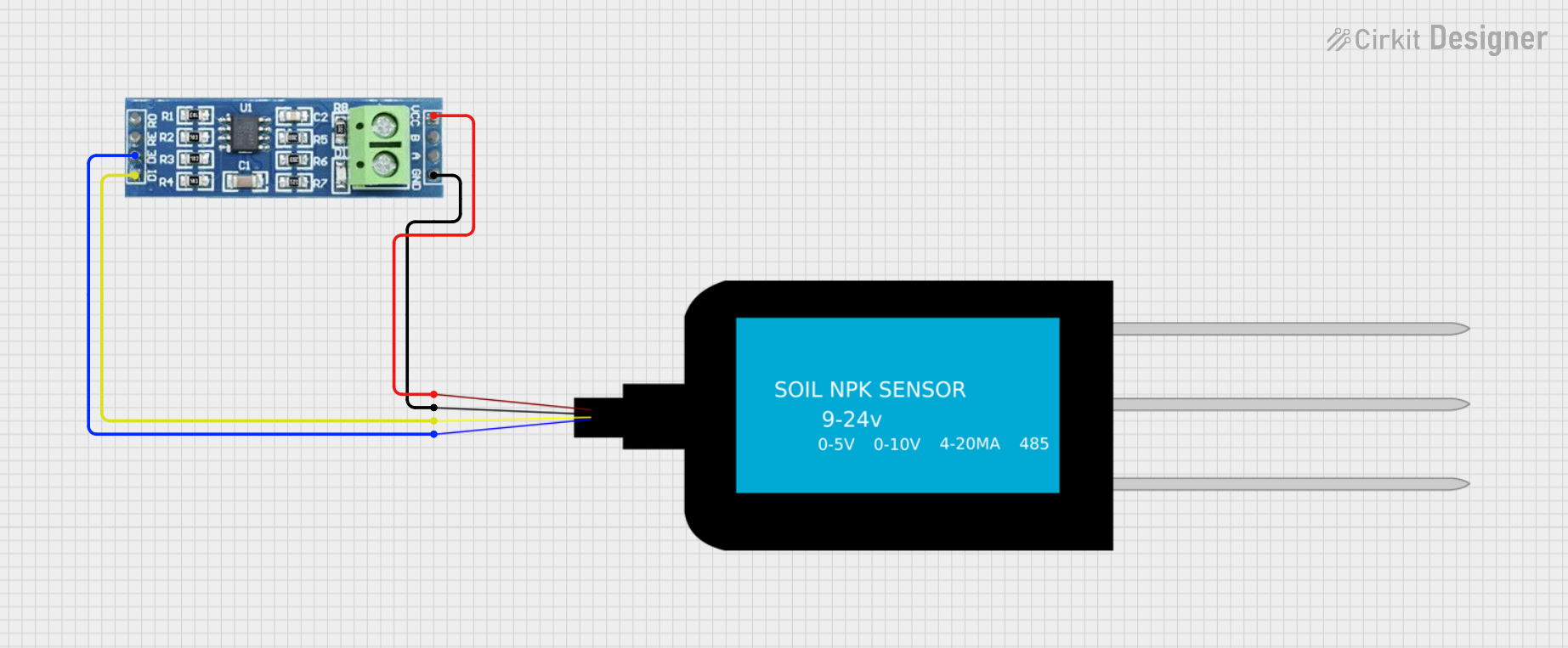
 Open Project in Cirkit Designer
Open Project in Cirkit Designer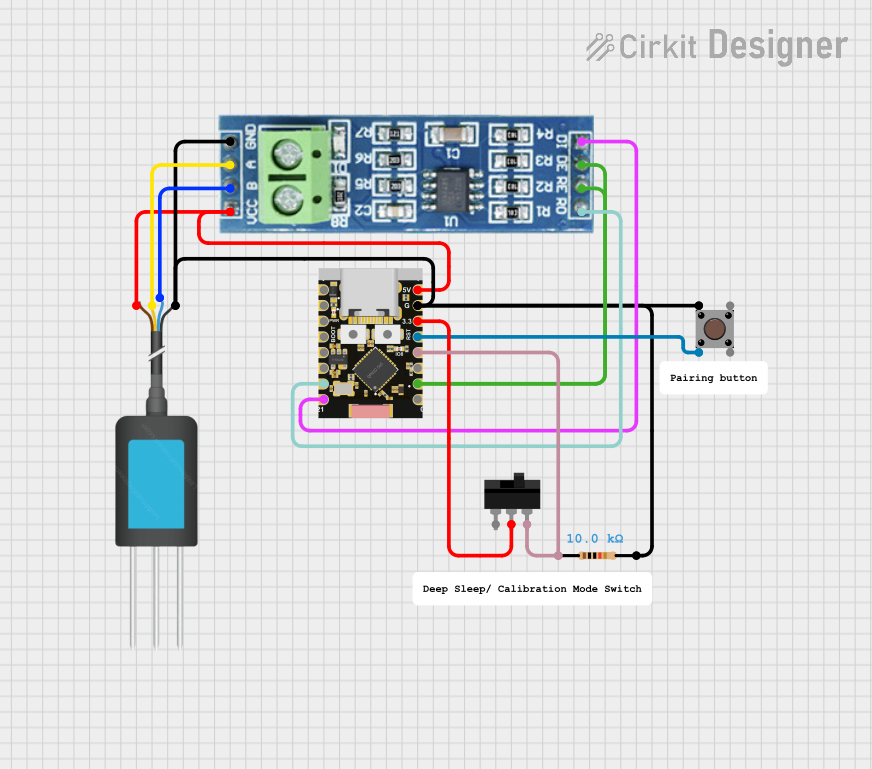
 Open Project in Cirkit Designer
Open Project in Cirkit Designer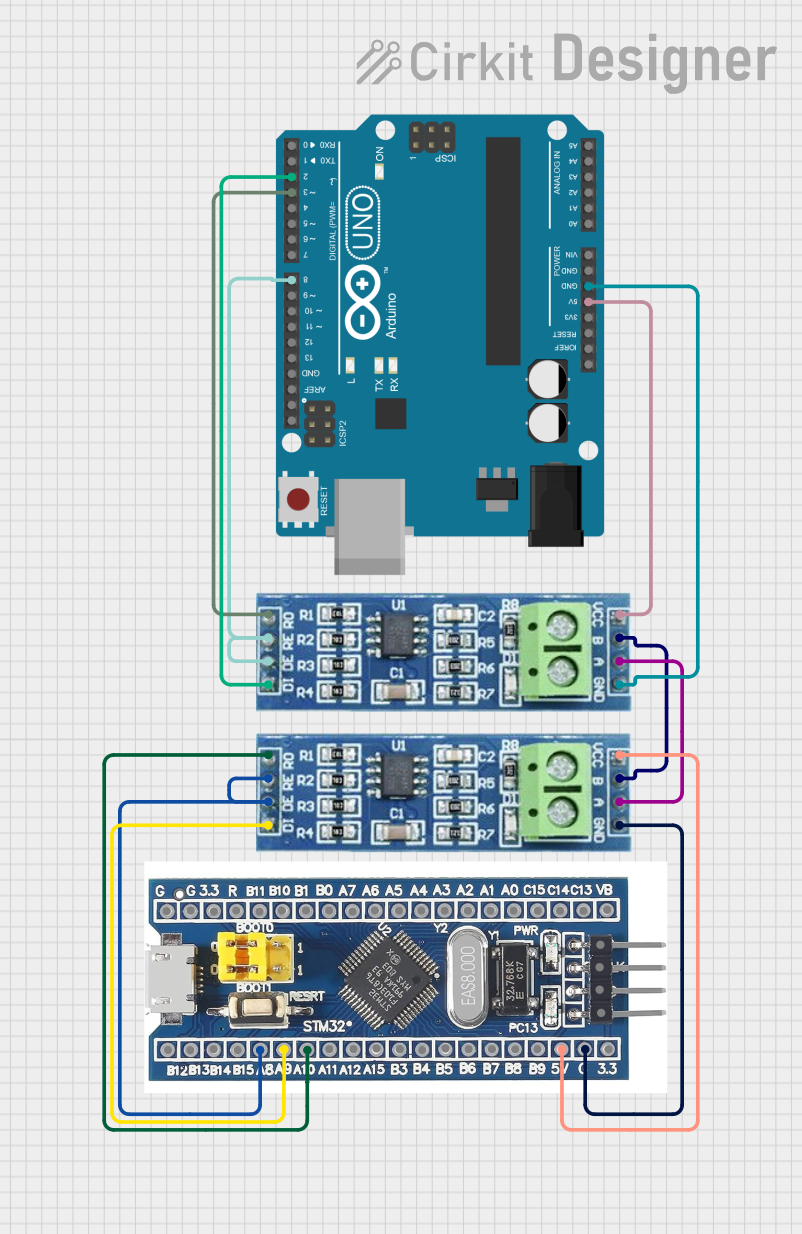
 Open Project in Cirkit Designer
Open Project in Cirkit Designer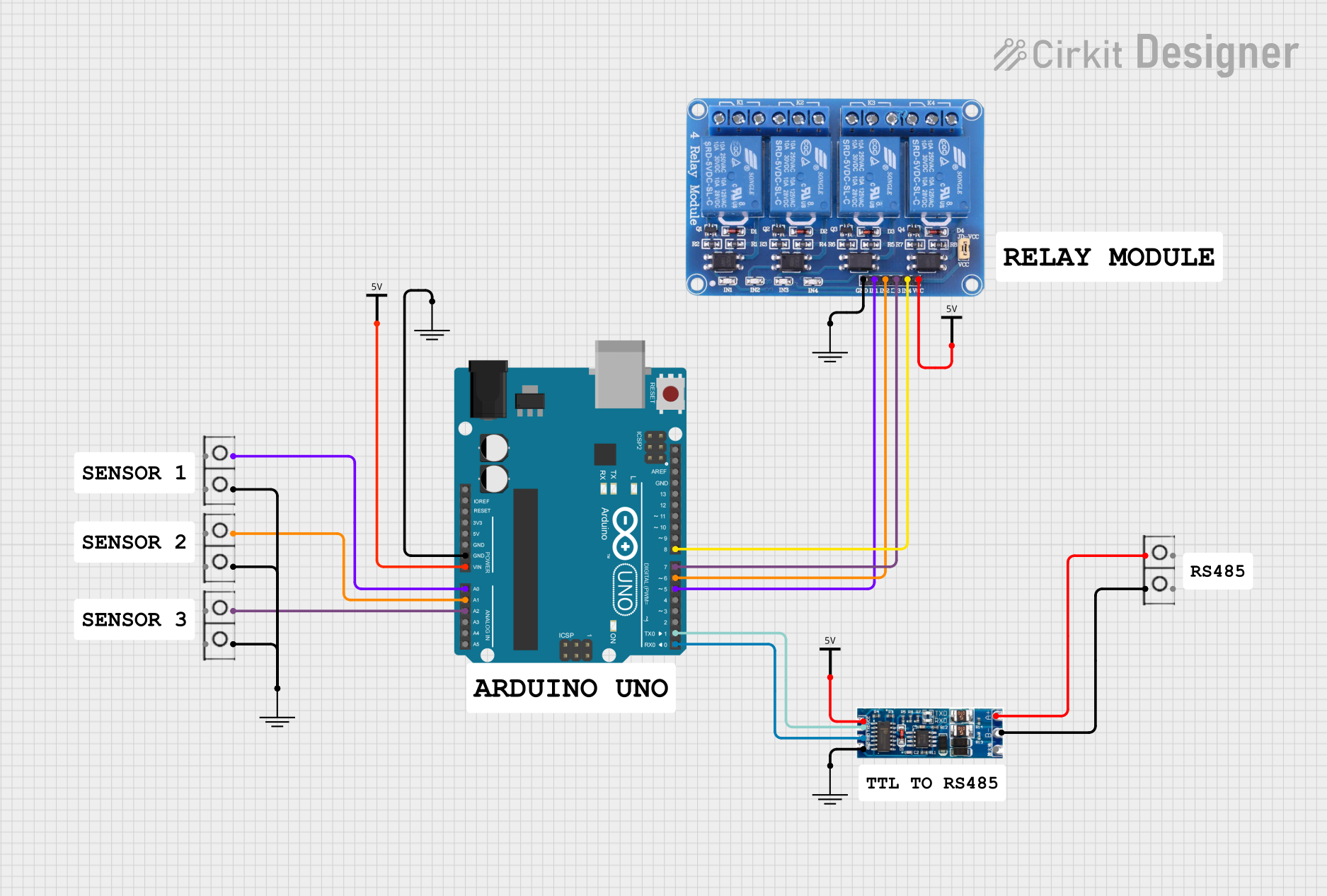
 Open Project in Cirkit Designer
Open Project in Cirkit DesignerExplore Projects Built with Grove - RS485

 Open Project in Cirkit Designer
Open Project in Cirkit Designer
 Open Project in Cirkit Designer
Open Project in Cirkit Designer
 Open Project in Cirkit Designer
Open Project in Cirkit Designer
 Open Project in Cirkit Designer
Open Project in Cirkit DesignerCommon Applications and Use Cases
- Industrial automation and control systems
- Building management systems (e.g., HVAC, lighting control)
- Long-distance data communication
- Multi-device communication on a single bus
- Applications requiring noise-resistant communication
Technical Specifications
The following table outlines the key technical details of the Grove - RS485 module:
| Parameter | Value |
|---|---|
| Communication Protocol | RS485 |
| Operating Voltage | 3.3V / 5V |
| Baud Rate | Up to 115200 bps |
| Operating Temperature | -40°C to 85°C |
| Dimensions | 40mm x 20mm |
| Connector Type | Grove 4-pin interface |
Pin Configuration and Descriptions
The Grove - RS485 module uses a 4-pin Grove connector. The pinout is as follows:
| Pin | Name | Description |
|---|---|---|
| 1 | VCC | Power supply input (3.3V or 5V) |
| 2 | GND | Ground |
| 3 | RX | UART Receive (connect to TX of the microcontroller) |
| 4 | TX | UART Transmit (connect to RX of the microcontroller) |
Usage Instructions
How to Use the Grove - RS485 in a Circuit
Connect the Module:
- Use a Grove cable to connect the Grove - RS485 module to a compatible Grove Base Shield or Grove port on your microcontroller (e.g., Arduino UNO).
- Ensure the VCC pin matches the operating voltage of your microcontroller (3.3V or 5V).
Wiring for RS485 Communication:
- Connect the A and B terminals of the RS485 bus to the corresponding A and B terminals of the Grove - RS485 module.
- If multiple devices are on the same RS485 bus, ensure proper termination resistors are used at both ends of the bus.
Configure the Microcontroller:
- Set up the UART interface on your microcontroller to communicate with the Grove - RS485 module.
- Use the appropriate baud rate (e.g., 9600 bps or 115200 bps) as required by your application.
Write and Upload Code:
- Use the following example code to test communication with the Grove - RS485 module using an Arduino UNO.
Example Code for Arduino UNO
#include <SoftwareSerial.h>
// Define RX and TX pins for SoftwareSerial
#define RX_PIN 2 // Connect to TX of Grove - RS485
#define TX_PIN 3 // Connect to RX of Grove - RS485
// Initialize SoftwareSerial
SoftwareSerial RS485Serial(RX_PIN, TX_PIN);
void setup() {
// Start the hardware serial port for debugging
Serial.begin(9600);
while (!Serial) {
; // Wait for the serial port to connect
}
Serial.println("Grove - RS485 Test");
// Start the RS485 serial communication
RS485Serial.begin(9600);
}
void loop() {
// Send a message via RS485
RS485Serial.println("Hello, RS485!");
// Check if data is available from RS485
if (RS485Serial.available()) {
String receivedData = RS485Serial.readString();
Serial.print("Received via RS485: ");
Serial.println(receivedData);
}
delay(1000); // Wait for 1 second before sending the next message
}
Important Considerations and Best Practices
- Termination Resistors: Use 120-ohm termination resistors at both ends of the RS485 bus to prevent signal reflections.
- Grounding: Ensure all devices on the RS485 bus share a common ground to avoid communication issues.
- Baud Rate Matching: Ensure all devices on the RS485 bus are configured to use the same baud rate.
- Cable Selection: Use twisted-pair cables for long-distance communication to minimize noise interference.
Troubleshooting and FAQs
Common Issues and Solutions
No Communication Between Devices:
- Verify the A and B terminals are correctly connected.
- Check that all devices on the RS485 bus share a common ground.
- Ensure the baud rate is the same for all devices.
Data Corruption or Noise:
- Use shielded or twisted-pair cables to reduce noise.
- Add termination resistors (120 ohms) at both ends of the RS485 bus.
Module Not Responding:
- Confirm the Grove cable is securely connected.
- Check the power supply voltage (3.3V or 5V) matches the module's requirements.
FAQs
Q: Can I connect multiple Grove - RS485 modules to the same RS485 bus?
A: Yes, RS485 supports multi-device communication. Ensure each device has a unique address or identifier in your application.
Q: What is the maximum communication distance for RS485?
A: RS485 can communicate over distances up to 1200 meters (4000 feet) with proper cabling and termination.
Q: Can I use the Grove - RS485 module with a 3.3V microcontroller?
A: Yes, the module supports both 3.3V and 5V operating voltages, making it compatible with a wide range of microcontrollers.
Q: Do I need to install any libraries to use the Grove - RS485 with Arduino?
A: No additional libraries are required if you use the built-in SoftwareSerial library for UART communication.